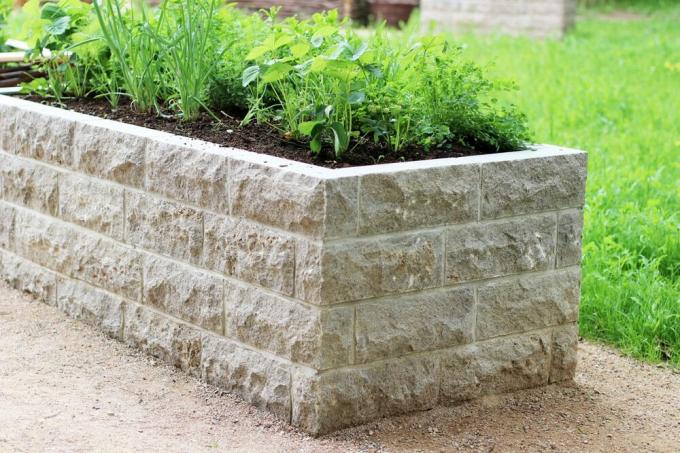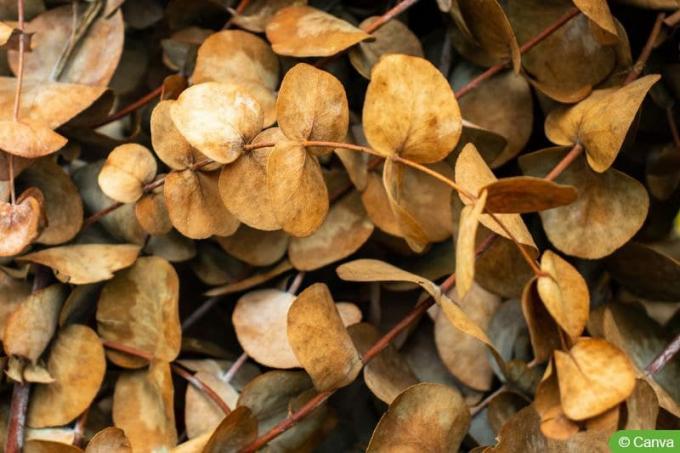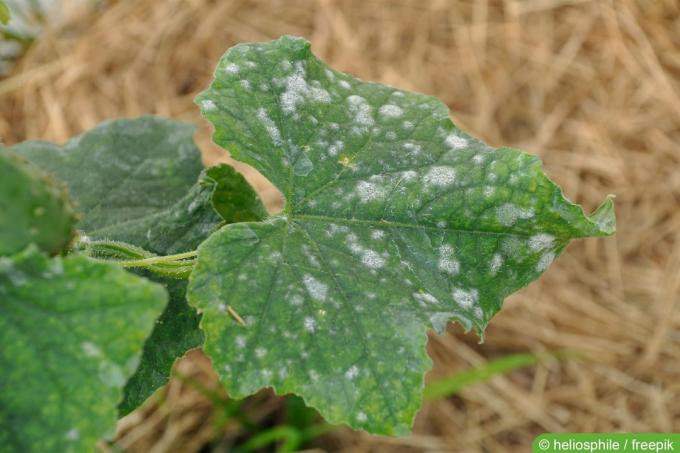

Table of contents
- What is important?
- space requirement
- accessibility
- light, air and rain
Raised beds are easy on the gardener's back and allow vegetables to be grown even on spatially limited areas such as balconies or terraces. With our help, you can determine the optimal location yourself based on relevant criteria.
What is important?
Not every raised bed needs the same location. Therefore, as part of the planning, check which issues are particularly important for you and your planting goal:
space requirement
- actual footprint of the raised bed
- Working area all around, or at least on one or two sides for all necessary work on the raised bed
- no space conflicts with other uses, e.g. B. fixed furniture
Tip:
Combine movement areas around the raised bed with other "flexible" areas on the terrace or balcony. In this way you save space through multiple use.
accessibility
- General accessibility for setting up and maintaining the raised bed
- Proximity to water supply: via tap accessible within hose length
- Convenient location for storage space for garden tools, watering can, etc.
- BUT: Difficult accessibility for children, pets and other, possibly unwanted people and possibly wildlife (ex. B. near the forest)
A NOTICE:
When accessing the raised bed, note that a balcony on the living room or bedroom, for example, because of Dirt on shoes, clothing and tools is less favorable than an open space in front of the Kitchen.
light, air and rain

The location significantly affects the amount of light, air and rainfall that the plants planted in the raised bed receive. How much of what is ideal depends on the plants used. However, some general statements can still be made about the environmental influences on the raised bed:
Light
None of the common garden vegetables prefer a semi-shady or even shady location. Therefore, avoid heavily shaded locations for the raised bed, for example on north sides.
Air
Many plants do not like wind. Therefore, choose sheltered locations on the house wall. However, good ventilation ensures that excess moisture is removed. Diseases and pests are also less able to establish themselves in well-ventilated areas. Therefore, avoid these locations:
- under canopies: patio roofs, carports, etc.
- with multi-sided enclosures, e.g. B. between house, garage and shed
- in garages or sheds
- in poorly ventilated greenhouses
Water
Every plant needs water to permanently survive and thrive. Intensive direct irrigation can reduce the need for watering. However, sensitive plants and early stages of development after germination suffer from too much direct rainfall. Protected layers on house walls reduce the rain load. However, natural irrigation remains.
DANGER:
When it comes to water and rain in your raised bed, don't just think about the water that gets into the raised bed. Proximity to a floor drain will help you drain excess water from the bed in a targeted manner.
 Home editorial office
Home editorial office
Learn more about crop protection

Drive away cockroaches: leave the light on at night?
Cockroaches are among the most disgusting pests that can appear in living spaces. But the disgust factor is only one side of the coin. The other is that the crawlies contaminate food supplies with pathogens. It is therefore essential to declare war on insects. Can cockroaches be repelled by leaving the light on at night?

Eucalyptus gets brown/yellow leaves
The eucalyptus is becoming more and more of a trend plant. With its blue-green leaves, the eucalyptus sets beautiful accents. Occasionally, however, foliage discoloration may occur. Everything about the causes and remedial measures below.

Small white dots on leaves: what to do?
When white dots appear on the leaves of crops, take a closer look as they can indicate problems. This text explains what causes can be responsible for this and what you can do about the stains.

White spots on leaves: what to do?
Whether in the home or in the garden, white spots on the leaves of your favorite plants are always a cause for concern. However, the causes can often be eliminated quickly. This guide summarizes the most common triggers and gives tips for quick help.

Red maggots / larvae in the apartment: what to do?
Red maggots in your own home are the ultimate nightmare sight. A few crippling seconds of shock are allowed. But then decisive and effective action must be taken to make them disappear. But who exactly is "the red enemy" and how is the fight fought?

Powdery mildew on cucumbers: how to get rid of it
The powdery mildew often stops by the cucumber bed and quickly conquers the entire plant. That is why every gardener must recognize it early and fight it properly. This is the only way to save the cucumber harvest.



